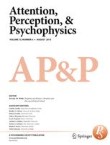
Abstract
The Simon effect is a stimulus-response compatibility effect in which the spatial dimension of the stimulus is task-irrelevant. This effect is often larger in reaction time (RT) for the stimulus located on the dominant-hand side of participants, for most of which it is the right hand, due to dominant-hand keypress responses being faster than non-dominant-hand responses. Experiment 1 demonstrated that pedal-press responses with the left and right feet show a similar asymmetry, favoring the right response for right-footed persons. The asymmetric pattern for keypress responses was absent in results of Wallace (Journal of Experimental Psychology, 93, 163–168, 1972) when participants were not permitted to see the response keys or their hands placed on the keys at any time during the experiment, whereas we found the asymmetric pattern in a recent study when participants placed their hands on the keys prior to their being covere d up. Experiments 2 and 3 showed that the Simon effect asymmetry for RT was evident even when participants were prevented from seeing the response device and their responding hands or feet. Although both hands and feet showed a Simon effect asymmetry in RT, consideration of incorrect responses suggested that whereas the asymmetry for hands is not due to a response bias, that for the feet may be due at least in part to such bias. Regardless, our results suggest that the Simon effect asymmetry is mainly an artifact of comparing conditions for which one response is made by the faster dominant right effector and the other with the slower non-dominant left effector.
Δεν υπάρχουν σχόλια:
Δημοσίευση σχολίου
Σημείωση: Μόνο ένα μέλος αυτού του ιστολογίου μπορεί να αναρτήσει σχόλιο.